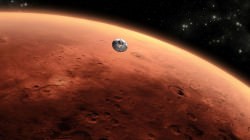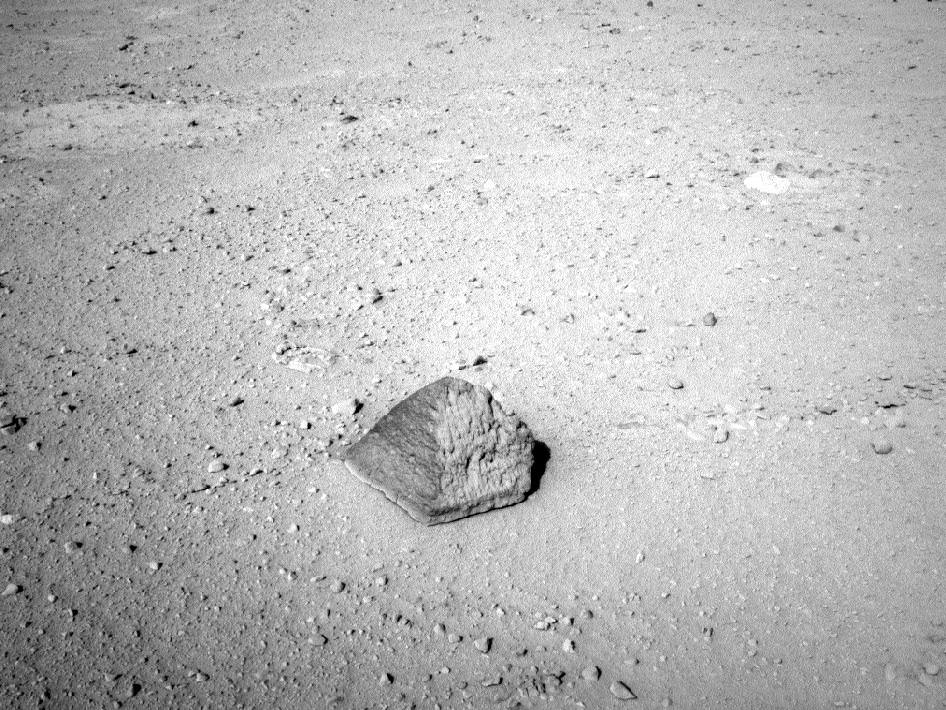A strange rock encountered by the Mars Curiosity rover early in its mission has few similarities to other rocks found on the Red Planet, a new study says. In fact, the “Jake_M” rock is most similar to a rare kind of Earth rock called a mugearite, which is often found in ocean islands and continental rift zones.
“Such rocks are so uncommon on Earth that it would be highly unlikely that, if you landed a spacecraft on Earth in a random location, the first rock you encountered within a few hundred meters of your landing site would be an alkaline rock like Jake_M,” stated Edward Stolper, a geology professor at the California Institute of Technology.
Jake_M is named after Jacob “Jake” Matijevic, a Curiosity operations systems chief engineer who died two weeks after the rover landed last year. The rock was sampled about two weeks after Curiosity hit the surface, and was revealed to have sodium and potassium in it (which makes it chemically alkaline.)

It’s probable that the rock came to be, the scientists said, after partially melting in the interior of Mars and then coming up to the surface. “As it cooled, crystals formed, and the chemical composition of the remaining liquid changed (just as, in the making of rock candy, a sugar-water solution becomes less sweet as it cools and sugar crystallizes from it),” CalTech stated.
Models examining the formation conditions suggest that Jake_M originated from an area some tens of miles or kilometers in the interior of Mars relative to the surface, and that the magma it formed in might have had a reasonably high proportion of dissolved water. This type of magma (called alkaline magma) is uncommon on Earth, but may be more common on Mars than previously believed.
You can read more details about the rock, as well as a series of four other papers published about science from MSL in the Sept. 27 edition of Science.
Source: CalTech

